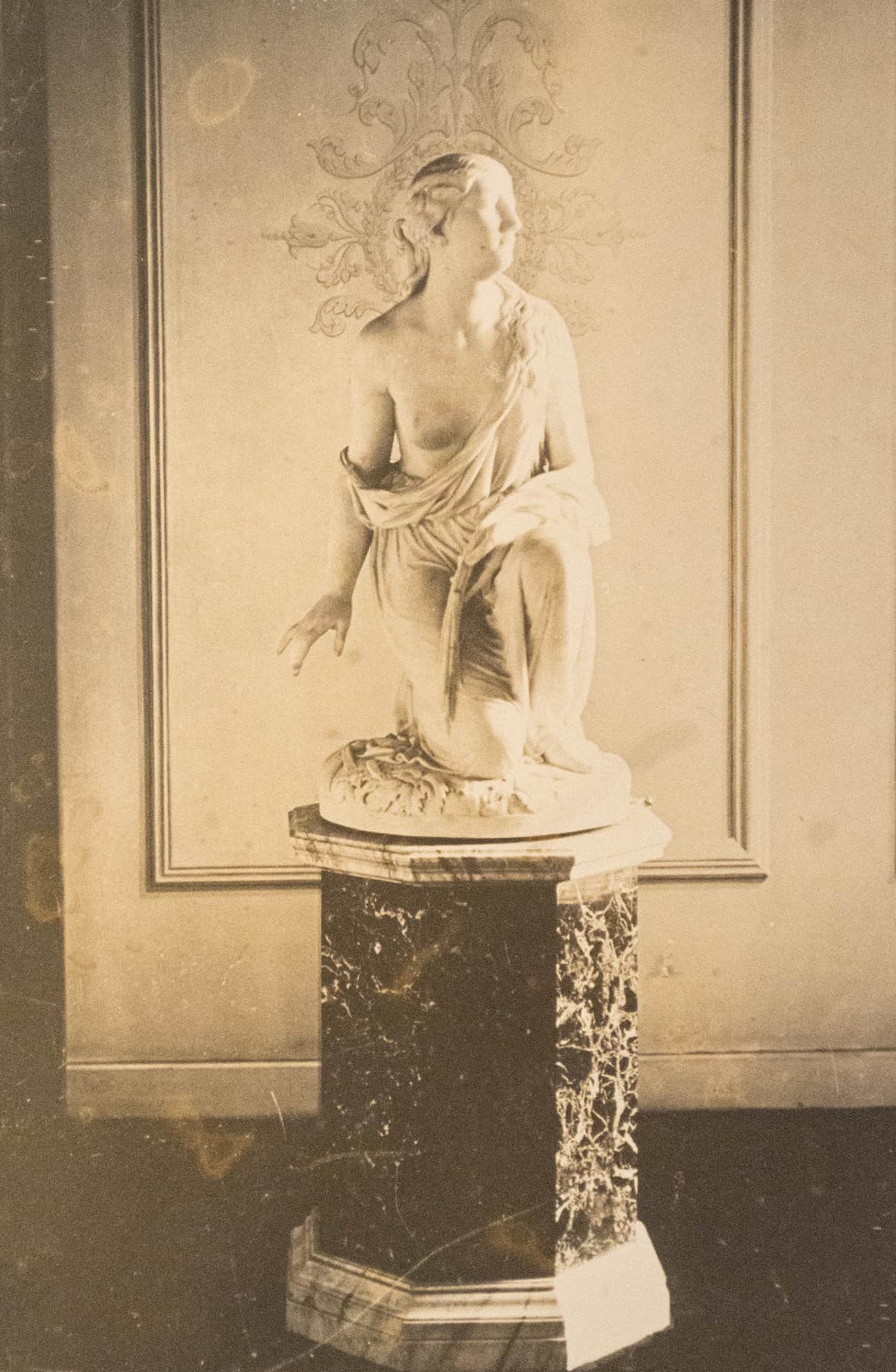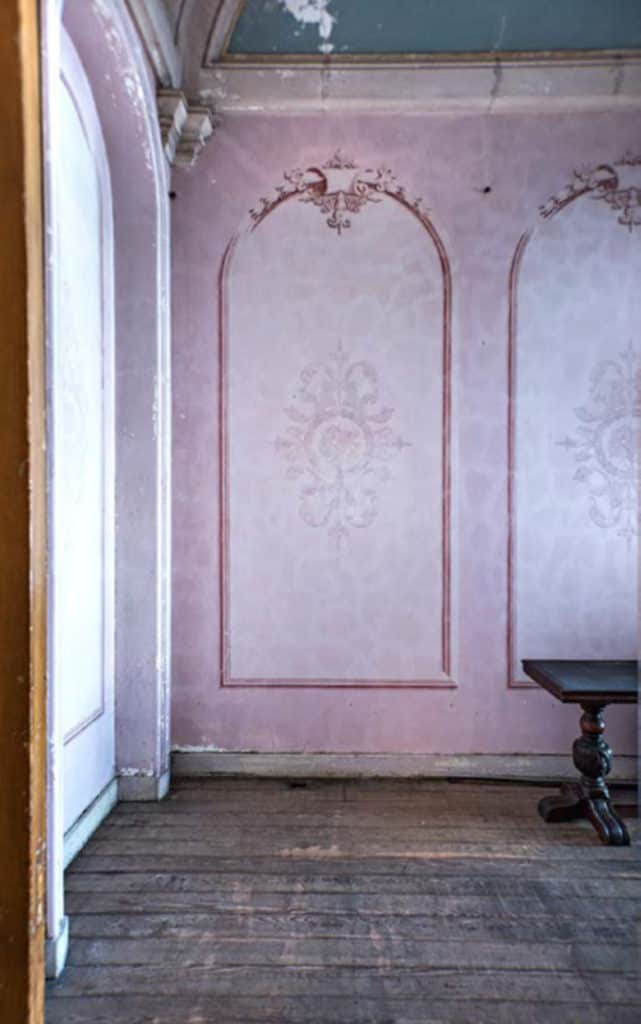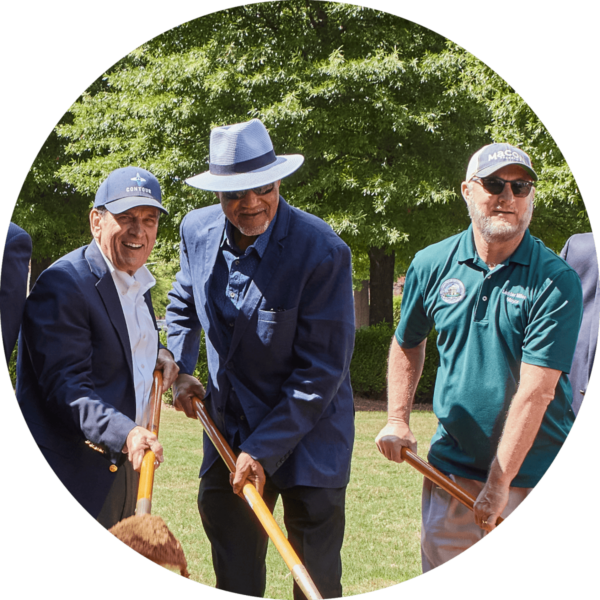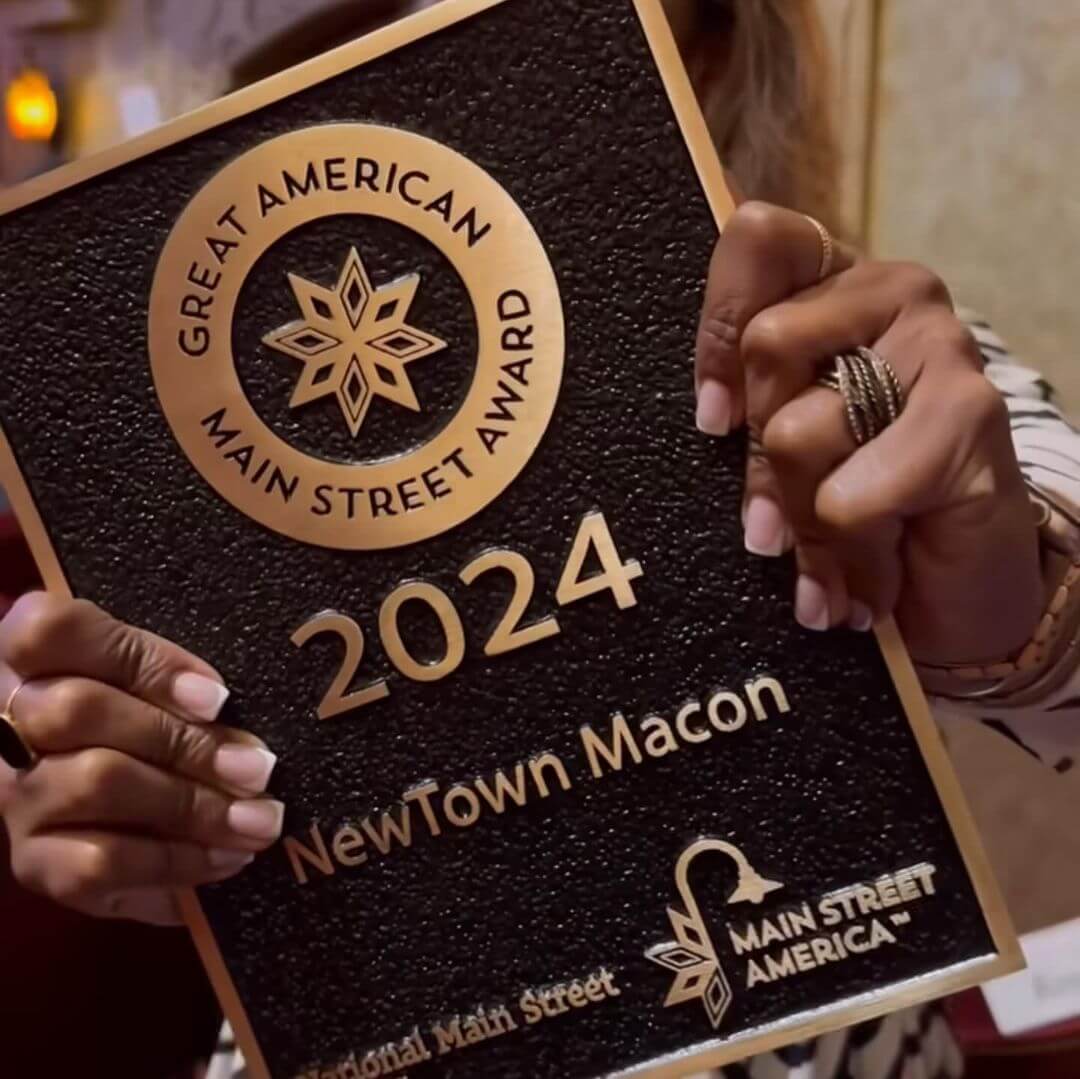
Hay Lore
Macon’s Earliest Sculptural Treasure
By Jonathan Poston, Director of Hay House
A previous Hay Lore column chronicled the story of the “Picture Gallery” at Hay House, as built for Maconites William B. and Anne Tracy Johnston in 1855-60, and the treasures throughout the building, as described in a Macon Telegraph article in the 1890s.
The 1890s Telegraph article about Mrs. Johnston’s paintings also described the Johnston’s amazing piece of sculpture and its space.
“Opening from the picture gallery is a small niche that was made especially for the marble statue of Ruth by Randolph Rogers, executed by the American sculptor in Rome. The grandeur of the sentiment in the piece of work implies the noble talent of our great sculptor. Although in marble, the statue is animated with a distinctive life. … This is certainly one of the rarest and most exquisite examples of statuary art produced in our age, and is naturally prized beyond measure by the Johnston household.”
During the planning of the Johnston house, the concept emerged between Mr. Johnston and his architect, T. Thomas of New York, to design one of the South’s first picture galleries in a private home and also this small alcove room, intended specifically to house the large sculpture, Ruth Gleaning, which Johnston commissioned in Rome in 1853.
Two original letters between Randolph Rogers and Mr. Johnston survive in the archives of Hay House. One of the letters reveals that Johnston paid $1,585.30 for the statue and its green marble pedestal. In the same missive, Rogers apologized for the years of delay with the commission because he discarded the first statue due to faults in the block of marble and asserted he was sending a better example “beautiful in every respect.”
The statue arrived in Macon when the house was still two years from completion. Eventually, the Johnstons placed the figure in the small alcove room, centered on the doorway, enabling it to be seen in a vista through the gallery and into the Drawing Room where the Johnstons held numerous dances in the 1870s and 1880s.
“Ruth’s Room” boasted walls painted in a palette of pinks and lavender with faux Italian Renaissance-style panels and a coved ceiling with sky blue panels and gilded ribbing. Ruth was lit by day by a skylight, and at night by four gas jets that created something of a halo around the sparkling figure.

Ruth’s Room as it currently appears
Schoolchildren, initially the friends of the Johnston daughters and nieces, came to the house to see Ruth and it became a beloved local artwork. After Mrs. Johnston’s death, her daughter, Mary Ellen Felton, decided to turn the sculpture room into a silver storage space with new cabinets. Thus, about 1912, the statue of Ruth was moved into its current location.
Mr. and Mrs. P.L. Hay purchased Ruth from the Feltons for $750 and the piece has remained in its 1912 location ever since. With the filming of an episode of the vampire series “The Originals” at Hay House in 2016, the statue was temporarily moved back to its former location. At that time, the Restoration Committee and the Board of the Georgia Trust agreed that “Ruth’s Room” should be fully restored and the statue should be permanently located in its original placement.
Beginning in late spring, a splendid grant from the Peyton Anderson Foundation will enable the full restoration of Ruth’s Room to its 1860s appearance, including the painted decoration, gas jets, skylight and Brussels carpet. By next autumn, guests of Hay House will enjoy Ruth and her room once again, just like Maconites of the 19th century.
An ongoing series about Hay House lore, traditions and history. 934 Georgia Ave., 478.742.8155, hayhousemacon.org.







